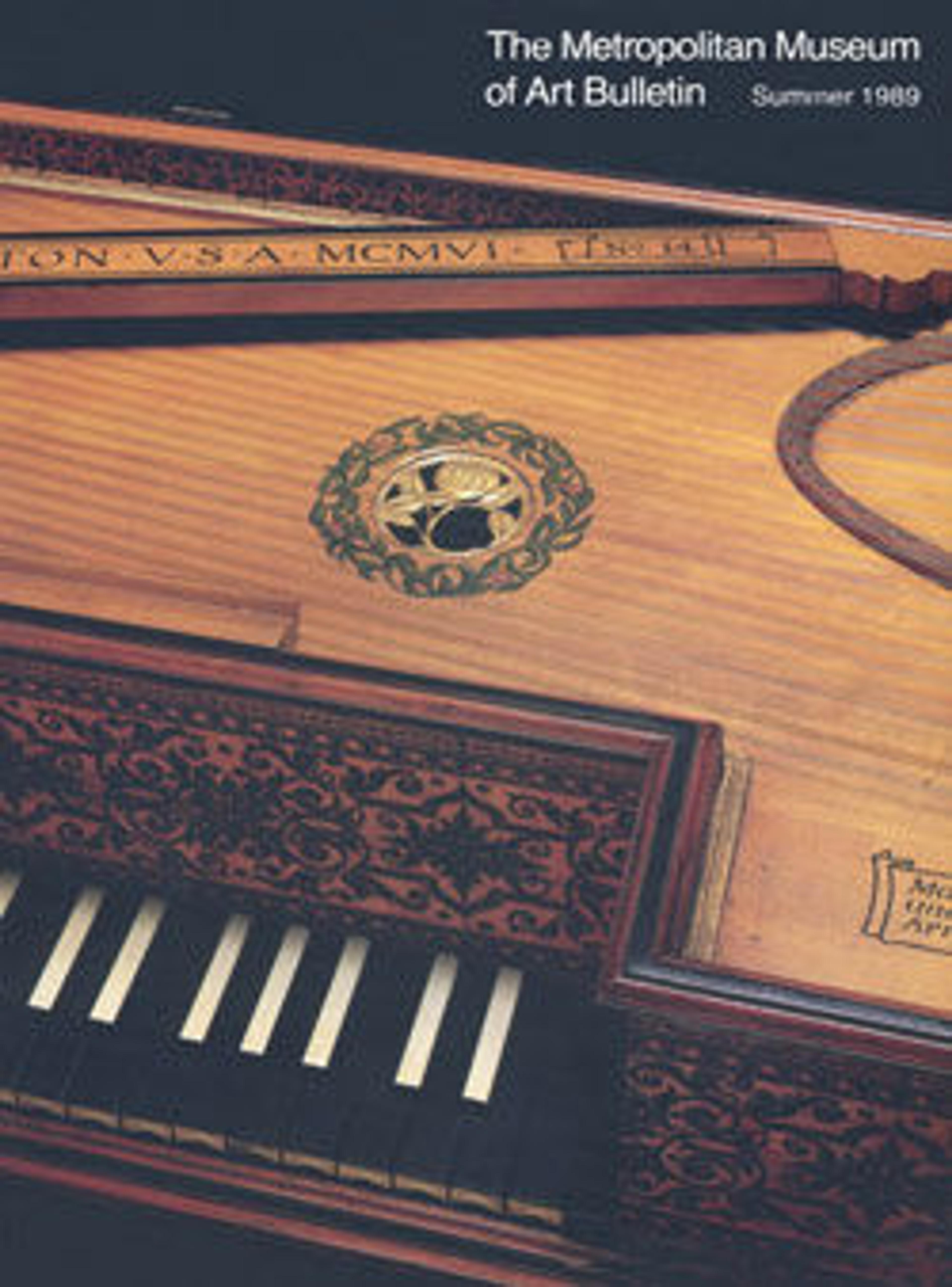Square Piano
On the makers' label beneath the soundboard, this square is called a Bandlony or "pantaleon," the name given earlier to a large hammer dulcimer popularized by the virtuoso, Pantaleon Hebenstreit. Hand stops below the 61 key (FF–f3), five octave keyboard control devices that modify the tone to imitate Hebenstreit's versatile dulcimer. The stops affect bass and treble strings separately, allowing tonal contrast between left and right hands. The case exterior is veneered with oak: wood-grained paper lines the interior. Four tapered legs. The key levers are carved like many German clavichord keys, and a compartment for equipment to the left of the ebony and bone-covered keys is also a feature of clavichord construction. This particular design was unique to the Jaeckel family in the Rhineland-Palatinate. Internally, the instrument has a Prellmechanik action without escapement.
Artwork Details
- Title:Square Piano
- Maker:Johann Christoph Jaeckel and Christian Jaeckel
- Date:1790
- Geography:Germany
- Culture:German
- Medium:Oak, iron, ebony, ivory, various materials
- Dimensions:Case L. (perpendicular to keyboard): 57 cm (22-1/2 in.); W. (parallel to keyboard): 159.1 cm (62-5/8 in.); Case D. without lid: 18.2 cm (7-1/8 in.): Total H.: 81.5 cm (32-1/8 in.)
Case H without stand 19 cm
Stand: 62 cm H; 159 W; 57 cm D - Classification:Chordophone-Zither-struck-piano
- Credit Line:The Crosby Brown Collection of Musical Instruments, 1889
- Object Number:89.4.3552
- Curatorial Department: Musical Instruments
More Artwork
Research Resources
The Met provides unparalleled resources for research and welcomes an international community of students and scholars. The Met's Open Access API is where creators and researchers can connect to the The Met collection. Open Access data and public domain images are available for unrestricted commercial and noncommercial use without permission or fee.
To request images under copyright and other restrictions, please use this Image Request form.
Feedback
We continue to research and examine historical and cultural context for objects in The Met collection. If you have comments or questions about this object record, please contact us using the form below. The Museum looks forward to receiving your comments.
